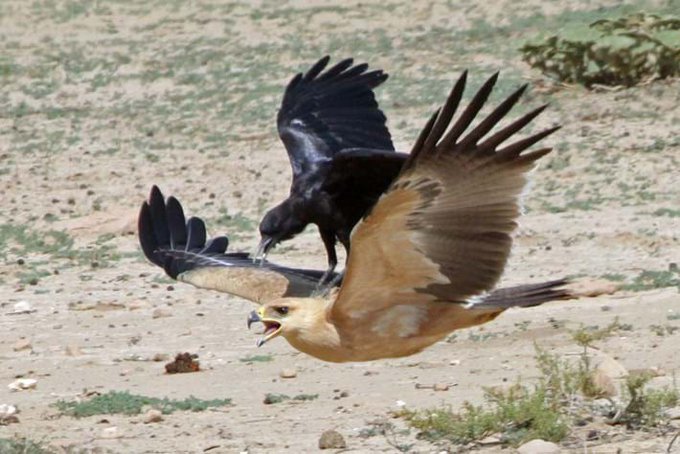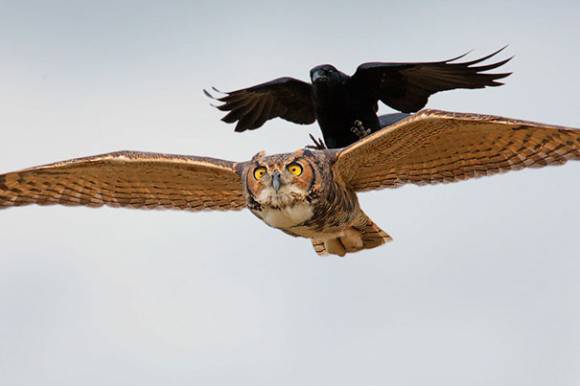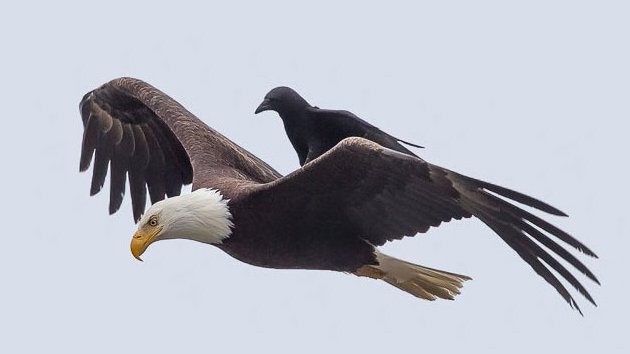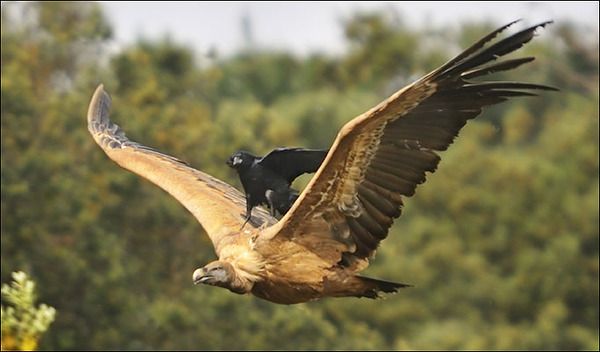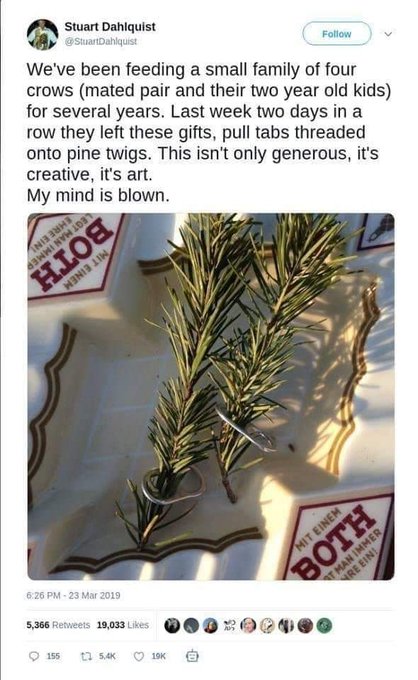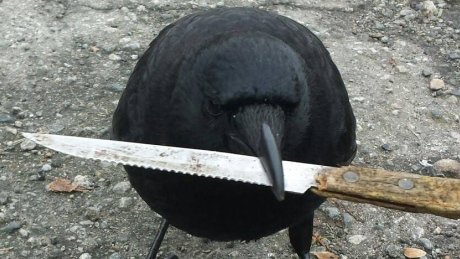On my internet travels, I came across images of a bunch of magpies around a body. It got me thinking, are these birds attending a magpie funeral? But it’s not as crazy as it sounds. Magpies are members of the corvid family, like crows, ravens, and rooks. You may not believe it yet, but these birds are incredibly sociable animals. In many ways, even more sociable and smarter than us! This article will explain why that is and what happened at the magpie funeral!
First things first, the whole question of how animals experience grief, or whether they do at all, is a hot topic amongst scientists, psychologists, and know-it-alls. What we do know is that corvids exhibit strong reactions when they see a body of their own kind. When a crow finds one, it’ll sound an alarm and draw in other crows from the area. They’ll congregate in a big, loud mob for up to 20 minutes, and in 30% to 40% of cases, the birds will interact with the body. This could mean simply pecking at it or it could escalate to ripping the thing apart. Curious, corvid expert Kaeli Swift conducted some experiments. One of the tests involved feeding a group of crows over several days before having someone walk through the group carrying an ex-crow, ensuring the birds saw it. Sure enough, for the next three days, the crows were more hesitant to approach the food pile, probably associating humans with danger.

But is there any emotion to this response, or is it purely practical? To find out, Swift ran another test. This time, she scanned the birds’ brains to examine their emotional response when viewing the carcass of a crow they were unfamiliar with. And she made the
earth-shattering discovery that not much happened. At least, in the emotional part of the brain.
The decision-making part did light up though, suggesting they were assessing the situation for potential threats rather than grieving. Does this mean all crows are stone-hearted after all? Well, no. Swift never used the body of a bird the crows were familiar with, like a mate. If she had, we might’ve seen a very different response. After all, we don’t typically get emotional over the passing of complete strangers. So, maybe there’s more to crows' emotions than we give them credit for.
Crows Are As Intelligent As A Seven-Year-Old Child
One thing's for certain, corvids are smart. Really smart. Scientists say their intelligence is comparable to that of seven-year-old children. That’s because a crow’s brain contains about 1.5 billion neurons, about the same as some monkeys!
However, crows’ neurons are much more tightly packed and better connected, meaning two things. Their brains are lighter, making flying a breeze, and the increased connectivity may give them intelligence closer to that of great apes like gorillas! While they may be smart though, they’re also pretty darn territorial. When crows are caring for their young, they’ll mob any predator that comes too close, including birds of prey. The predatory birds however, much like us trying to ignore an annoying little dog, will often completely ignore the pestering corvid. A 1-pound American crow will even take on a bald eagle, which can weigh up to 14 pounds! Think of it like an adult human squaring up to an American bison! But crows aren’t just bold enough to challenge eagles, they’ll square up to people too! One such story comes from YouTube user Daniel Russel, who was studying at the University of Washington in Seattle. He claimed that the American crows that lived on campus were very aggressive and didn’t think twice about dive bombing unfortunate students. It wasn’t because they hated the students, they were just very protective of other birds, even those that weren’t crows.

One day, Russel found an injured robin chick. Concerned, he decided he’d take it to the library and use the computers there to find a vet. This was in the dark ages before smartphones. As he picked up the chick and made his way there though, a mob of crows started chasing him! They hounded him all the to the library, but because it was a Sunday, no vets were open. Sadly, the chick didn't survive, but for poor Russel, that was just the start of his woes. For the next few years, flocks of angry crows chased him whenever he showed his face on campus! This can’t be verified, but some of it definitely rings true.
Crows Hold Grudges
Crows do attack animals to protect their young, including humans, and we already know they’re protective of other bird species too. Though it could’ve been something more sinister. Crows are also known to eat fledgling birds, so they may’ve just wanted him to get his hands off their lunch. But what about the fact they followed him for years? Crows hold grudges!

Crows have an excellent memory for human faces, something Professor John Marzluff and his brainy team at Washington University decided to prove back in 2006. Their five year study involved the researchers dressing up in caveman masks and then capturing, banding, and releasing the birds across five locations on campus. Months later, they donned the same caveman masks, as well as masks depicting former US Vice President Dick Cheney, to compare the crows’ reactions to the two. The Cheney mask drew little response from the crows, but when they saw the caveman mask, they would squawk loudly and flap their wings. Interestingly, this reaction wasn't just from the crows that had been captured; it also came from those who had witnessed the captures. Shortly after the trapping, about 20% of the crows in the area reacted angrily to the caveman face. But, and this is the craziest part, five years later 60% of the crows reacted this way.
The Crow Whisperer by UW Video It seems the flock had learnt to remember and fear that particular face, as well as pass the knowledge down from older to younger generations. After publishing the findings of this study in 2011, Marzluff claimed he was visited by US military officials who asked him if crows could be trained to go behind enemy lines and
hunt down Al-Qaeda boss Osama bin Laden! No word on what happened with that, but crows have been considered for military use since. Remembering faces and mobbing enemies aren’t the only things crows are good at. Stories of crows using their wits to catch food are told all over the world. In Tel Aviv, Israel, a resourceful hooded crow was seen
throwing bread into water to lure fish over and then catching them with its beak. And in some cities, crows have even learnt enough manners to walk along street crossings!
Crows using pedestrian crossing to cross the road by Emmanuel Zammit Crows Can Create Compound Tools
In 2018, researchers from the Max Planck Institute for Ornithology and University of Oxford studied crows in New Caledonia, a French island in the Pacific Ocean. The team discovered that these birds can create tools by fitting parts together, a skill previously only seen in great apes. The crows managed to do this without any assistance and without having seen these tools being made before; they simply figured it out by themselves.
For comparison, it takes children years to master this skill because it requires them to envision how an object will appear before it’s been created. In one experiment, researchers provided eight crows with a box that had a tiny food container behind a door with a small opening at the bottom. At first, the crows were given long sticks, to hopefully push the food to an opening on the side of the box. All eight crows passed without issues. In the next phase, they were only given short sticks, which were too small to reach the food. However, these short pieces could be combined, as some were hollow and others could fit inside them. Four crows figured out how to put the pieces together to make a longer tool and retrieve the food, without any demonstration. In the final step, even shorter pieces were provided. Out of all the crows, one named Mango successfully combined three or four pieces to make a tool long enough to reach the food!
Crows using compound tools by University of Oxford But don’t go thinking that corvids see tool making as a chore. A 2019 study found that crows actually enjoy making tools and it puts them in a happier mood. It’s like playing games or painting for us, they do it because they find it fun! In another remarkable feat of intelligence, Caledonian crows were able to understand water displacement, that’s when the water in a container is pushed upwards to make room for an object. Researchers presented a crow with a tube full of water and a tasty scrap of meat floating on top, out of the bird's reach. The crows realized that by adding objects to the water, they could raise the water level and nab the treat.
One especially clever crow named Betty even bent wire to make a hook to pull a bucket out of a vertical tube, a behavior that has since been observed in other crows.
Betty The Crow Creates a Tool / Betty, La Cuervo, Crea una Herramienta by Brandeau Technologist Joshua Klein thinks that the
crows’ intelligence could be harnessed for public services. He built vending machines that dispensed peanuts in exchange for coins, training crows to slot coins into the machine. Klein argues, why not use similar tech so that crows could be trained to collect trash and put it in bins in exchange for treats, just like the vending machine? Although The New York Times has
questioned the validity of Klein’s tests, it could be worth trying out.
Corvids Can Play Games
Others have tried utilizing corvid intelligence in different ways. In the town of Lysva, Perm Krai in Russia, a raven called Gosha has demonstrated its impressive intelligence under the watch of its owner, Alexander Sergeevich. Check out this clip of the raven retrieving snacks from a tube:
cunning raven solves puzzle #raven #birds watch this clever bird by Widdy World Entertainment The bond between the pair began when Alexander stumbled upon a freshly felled tree. Circling above were two adult ravens, squawking loudly, a sign that could mean they’ve found a dead animal or that something is threatening their chicks.
Well, among the branches below, Alexander found a nest with a two-week-old raven chick. It can’t have belonged to the birds above or they’d have helped it, so he decided to take it home to safety. Then he contacted a local corvid expert who taught him how to understand and train these amazing birds. Over the years, Gosha has learnt over 30 commands and can even beat Alexander in a game of tic-tac-toe!
A Raven playing Tic Tac Toe by bloodbath Corvid Mimicry
Figuring out puzzles isn't the only impressive talent corvids have though, as Zachary Fronchak discovered in 2023. While walking around Mizzy Lake in Algonquin Park, Canada, he stopped for lunch, only to be approached by a raven clearly interested in his food. The bird kept flying between him and his snack-filled backpack, and then, to Zachary’s surprise, it started yapping like a dog!
Here's another raven barking like a dog:
It turns out corvids are fantastic mimics and can replicate a wide range of sounds. The raven at Mizzy Lake may’ve learnt this bark from people walking their dogs along the path and employed it to try and scare Zachary off. Corvids can even replicate human speech, much like parrots. Although this doesn't necessarily mean they understand what they're saying. For example, this raven in Knaresborough Castle, north England, isn't really asking visitors if they're all right.
'Y'alright love': crow welcomes tourists to Yorkshire castle by Guardian News Birds use an organ called the syrinx, a double-chambered voice box, which allows them to produce a variety of sounds. Corvids, in particular, are adept at controlling their syrinx, enabling them to mimic over 100 different sounds. They copy others to show off their voice to a potential mate, bond with other birds, or even scare people off their sandwiches!
Ravens Feel Empathy
Bonding with other birds surely means that corvids have feelings after all. Folks at the University of Vienna discovered that ravens feel empathy! A phenomenon known as emotional contagion means that if one raven displays a negative emotion, another raven will respond with a similar negative emotion, something observed in humans too.
Studies have also shown that
ravens can identify and remember members of their own flock. For the first ten years of their lives, ravens live in groups and need to distinguish between who’s friendly and who’s not. Researchers in Vienna studied 12 juvenile ravens and discovered that they use different vocalizations for different birds they encounter. For their friends, they used a high-pitched voice, whereas for their foes they used a low, rough voice. The ravens were then relocated in pairs to various areas across Austria and Germany. After three years, the researchers recorded the calls of the separated birds and played them back to each other. If a raven heard the call of a bird it had been friendly with, it responded with a friendly noise, even after all that time. The ravens’ calls would’ve changed slightly over the years too, so the birds must’ve been able to recognize the individual, not just the specific call.
We’ve learned about humans making special connections with these curious corvids already, but the next anecdote shows that the other way around is also possible. By 2015, eight-year-old Gabi Mann from Seattle had
received more than 60 gifts from local crows. It all started in 2011, when Gabi was just four years old. She would accidentally drop bits of her lunch in the yard, which crows eagerly pecked up. Seeing this, Gabi and her mom started putting out fresh water, peanuts, and other snacks. The crows loved it, and in return began leaving small, shiny objects on the lawn! That’s truly wild. A similar story comes from 54-year-old Stuart Dahlquist, also from Seattle, who fed a family of crows for four years. The crows lived in a tree that stood near his home, and he even helped one of their chicks back into the nest when it fell out, though the parent crows weren't initially too happy about it! Despite this, Stuart began receiving gifts from the birds at the spot where he left food. Once, he found twigs threaded through the tabs of soda cans. He shared a photo on Twitter, commenting, "This isn’t just generous; it’s creative, it’s art." And you have to agree with him!
But do the crows actually know Gabi and Stuart, or are they just responding to circumstance? While we know crows remember faces to avoid, it seems they can also remember faces they’ve befriended. Evidence suggests that crows behave differently around familiar individuals and are more likely to give gifts to those they know and trust. They can learn that leaving objects for certain people results in getting food, much like how we train dogs with treats. As for the art piece Stuart found, corvid expert Jennifer Campbell-Smith had this to say: "I am very skeptical of random internet sources, but knowing these birds and how intelligent they are, I wouldn’t be shocked."
Canuck The Crow
Of course, being intelligent as they are, crows are bound to get involved in all kinds of mischief. However, no crow has ever been quite as mischievous as Canuck, from Vancouver. As a hatchling, Canuck was pushed out of his nest but fortunately a boy rescued him and raised him until he was old enough to be released back into the wild.
Being used to human company, Canuck befriended the boy’s neighbor, Shawn Bergman, and visited him every day. Shawn was so smitten with the bird that he created a Facebook fan page, '
Canuck and I', to document the crow's escapades. Canuck was notorious for stealing things, but he was clever enough to only take items that people actually valued. If someone freely handed him something, he'd quickly lose interest. One time,
he even stole a knife, a key piece of evidence, from the police at a crime scene! Fortunately, Canuck gave up the weapon and the police decided not to press charges for tampering with evidence.
The conniving crow even decided to forgo flying and travel around the city by train instead.
Raven on the sky train by Frank Williams Through his various misadventures, Canuck became a local celebrity, drawing large crowds at events like soccer matches. His familiarity with people seemingly led him to become fascinated by them and their belongings.
Cat & Crow Friendship
It’s not just us humans that crows befriend though; some of these birds have even made friends with their oldest foes: cats. In 2007, a YouTuber named ozricus posted an incredible video from an old TV show about an elderly couple, Wallace and Anne Collito, who lived in North Attleboro, Massachusetts.
From their front porch, they witnessed a crow caring for an abandoned kitten. They said the bird became like a parent to the little cat, feeding it and even cawing at it whenever it wandered onto the road. Not to mention the hours they’d spend playing with each other!
Crow and Kitten are Friends by ozricus That was all we knew until ozricus received a message from someone named Nathan Collito two years after posting the original video. Nathan claimed that Wallace and Anne were his grandparents, and said that one day the crow was injured after being hit by a car. Luckily, the bird survived, but it stopped visiting the grandparents’ property after the incident. The kitten, from what they could tell, was distraught by the loss of its beloved protector. Another, less sad, story of corvid-feline friendship comes from the Crow family, as in, they’re humans and Crow is their surname. Anyway, the human Crows adopted a bird crow chick after their youngest son found it abandoned. They named him Creybill because it’s an awesome name and raised him as part of the family. To teach the bird to fly, they took him to the local football pitch and repeatedly threw him into the air. After a few crashes, he eventually got the hang of it! While the friendship between the crow and the Crows is remarkable, what’s even more impressive is that Creybill also befriended their pet cat, Toot. Far from hurting the bird, Toot was utterly unphased by a crow in his house. As for Creybill, he attached himself to the cat like it was a new guardian. Had young Creybill mistaken Toot for his own kind? Regardless, the two could often be seen playing and tumbling over each other, proving that love can transcend the boundaries of species in the most unlikely of ways.
Bob Austin, PM Magazine - My Cat Has a Pet Crow by Epausti Magpies Hold Funerals
So we know crows are incredibly intelligent, emotionally complex, capable of remembering not just their own species but others as well, and they're also very good at forming close bonds. Which brings us right back around to the magpie funeral caught on video mentioned earlier. It was taken in July 2013 in Saskatoon, Canada, and shows a group of black-billed magpies seemingly grieving over the body of a close friend they found on the road.
Magpie Death Ritual by Guy Odishaw We can't truly know what an animal is thinking and that there's a risk of anthropomorphizing here, but it looks like these magpies are expressing grief, much like humans do when they lose a family member. As researcher Kaeli Swift noted, we don’t really know what would happen if a corvid encountered the body of a loved one. Maybe they really do grieve. There are plenty of cases of other animals grieving for their loved ones. Everything from elephants, primates, dolphins, and whales all exhibit strange behaviors when presented with a departed companion. Just like crows, this behavior can range from inspecting it out of curiosity to tearing it apart.
The appearance of what we call "grief" seems to be most common among animals that live in social groups, as the passing of a member disrupts their social structure. For instance, in primates, it’s not unusual for mothers to hold onto their deceased infants for weeks or even months. In extreme cases, they might cling to them until only the skeleton remains. That’s heartbreaking.
A similar tale comes from 2013 in Dana Point, California. Whale watchers spotted a dolphin carrying a dead calf along her dorsal fin while swimming.
Grieving Dolphin Carries Dead Calf Around For Days, Seen During Dana Point Whale Watching Safari by Capt Dave's Dana Point Dolphin & Whale Watching Safari Apparently the pair were surrounded by other dolphins, almost as if they were being protected. The captain onboard believed the calf could’ve been dead for weeks, the mother unable to let go. And this sad display is just one example. Between 1970 and 2016,
researchers collected 78 reports of cetaceans, the family that makes up dolphins, porpoises, and whales, showing signs of grief. The vast majority of these were dolphin mothers mourning their deceased calves, but other species were spotted grieving too. It’s not just the cleverest clogs of the animal kingdom who can feel emotional pain though. YouTuber ‘The World is a Vampire’ shared a story about a pair of mourning doves that lived near their house. One day, one of the doves passed away in the middle of the road. The surviving bird stayed by the body, cooing sadly, but despite Vampire’s attempts to shoo it away it refused to leave.
So, Vampire moved the deceased dove below a tree in their yard where it was safer. Sure enough, the mate followed and stayed by its side. By the third day however, Vampire awoke to find both doves were gone. Presumably, the carcass was taken by predators and the other dove scared away. From what we’ve gathered, mourning doves do mate for life, but if one mate dies the other typically finds a new partner. Here’s hoping our grieving survivor found it within themselves to move on! Whether they’re crows, ravens, dolphins, doves or whatever, one thing we know is that we'll always be amazed by the depth of animals' emotional bonds and the feelings they must have for each other.





